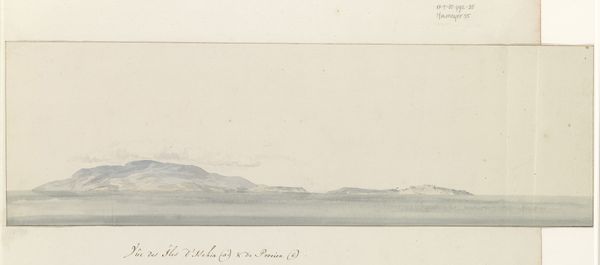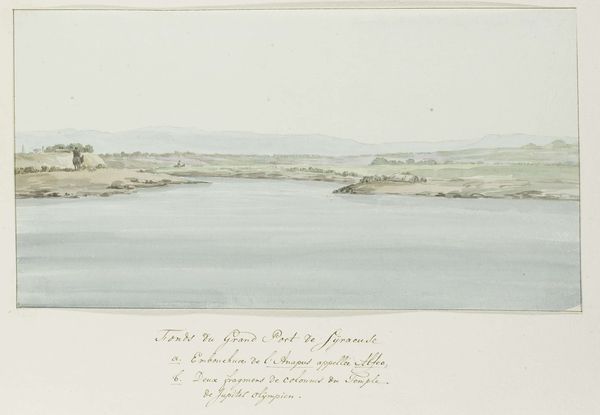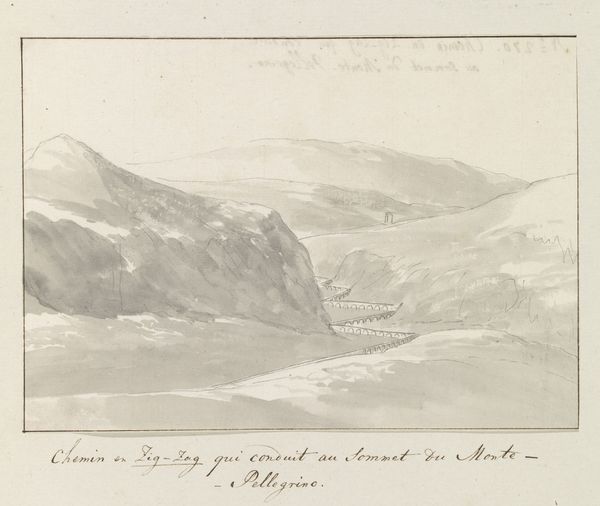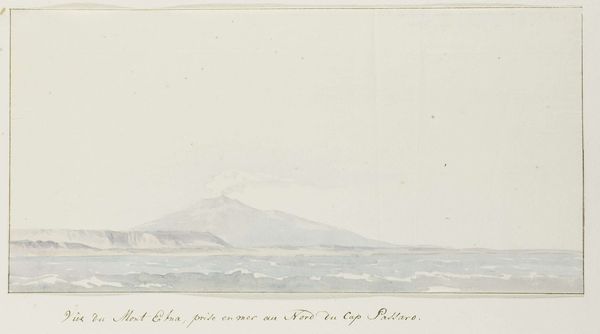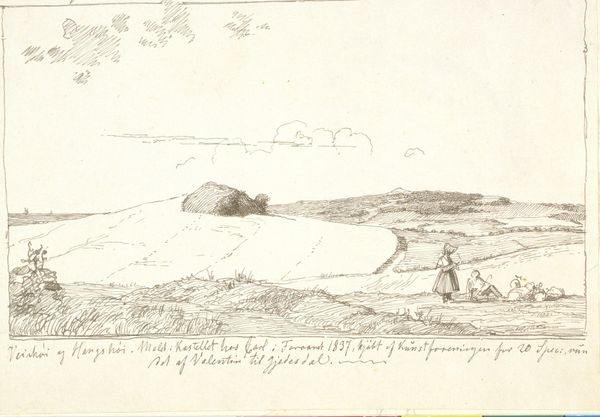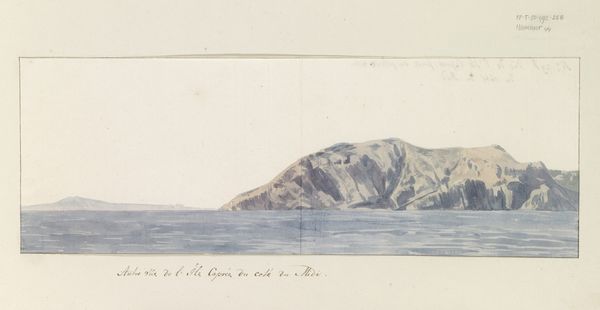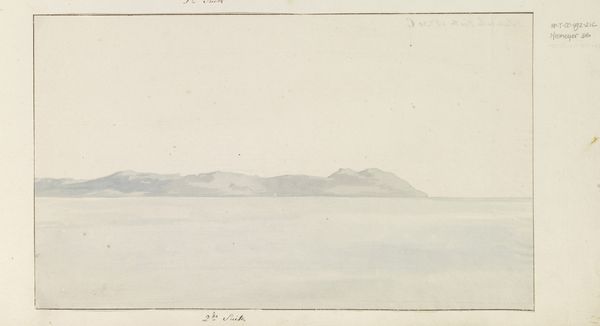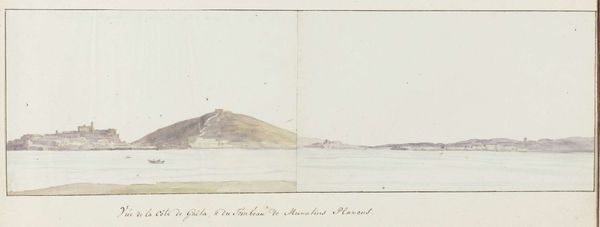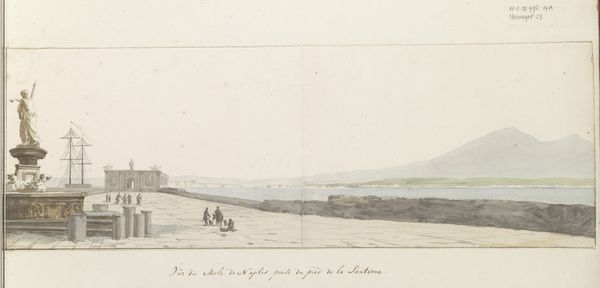
drawing, plein-air, watercolor, pencil
#
pencil drawn
#
drawing
#
plein-air
#
landscape
#
etching
#
watercolor
#
pencil drawing
#
pencil
#
watercolor
Dimensions: height 162 mm, width 377 mm
Copyright: Rijks Museum: Open Domain
Louis Ducros made this coastal scene near Taormina using watercolor and graphite. These materials, while traditional, allow for a certain kind of rapid image capture. The pale washes of color suggest a light-filled, almost ethereal atmosphere. Notice how Ducros uses the graphite to define the rocky outcroppings and the distant hills. The layering of the watercolor creates depth, suggesting the passage of space and atmosphere, and the interplay of light and shadow. This wasn't just about recording a pretty view, it was about transforming the natural world into a consumable image, as the Grand Tour took hold as a cultural phenomenon. Watercolor sketches like this one fed a growing market for picturesque views, souvenirs of travel, packaged for consumption. The material qualities of the artwork, combined with the social context of its creation, reveal the complex relationship between art, tourism, and the commodification of nature. The ease of watercolor belies the economic forces that shaped its production.
Comments
No comments
Be the first to comment and join the conversation on the ultimate creative platform.
